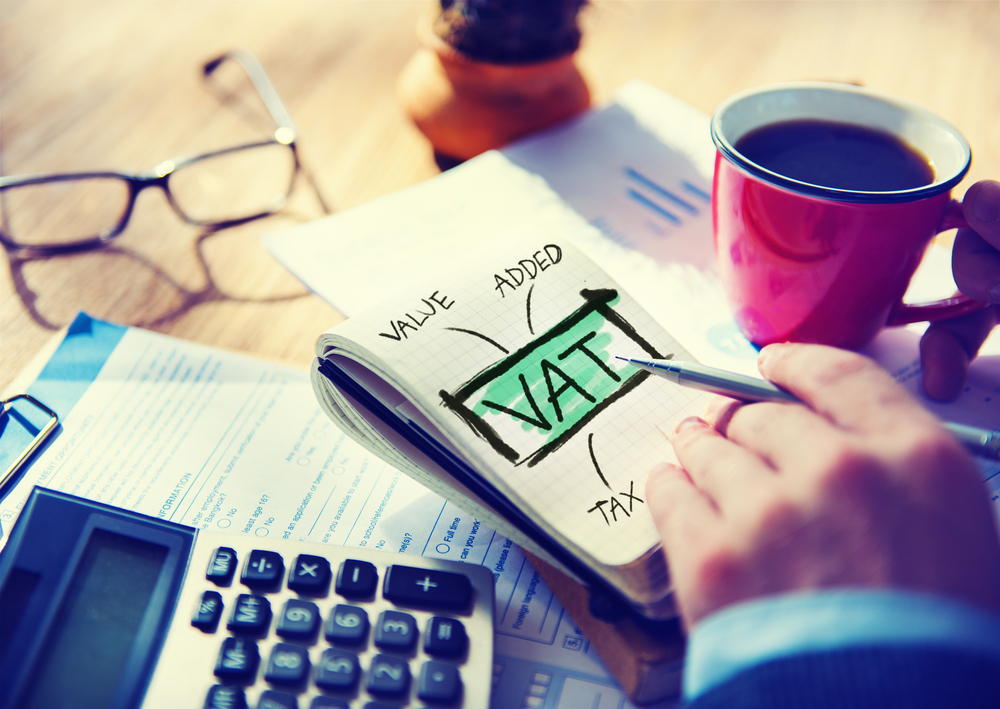What Is VAT?
Value Added Tax (VAT) is a consumption tax applied to the sale of most goods and services in the UK. It is an indirect tax paid by the consumer rather than the business. The business collects VAT on behalf of the government, adding it to the price of their goods and services. The current VAT rate is 20%, though there are reduced rates of 5% and 0% for certain items such as children’s clothing, medical equipment, and some food products.
VAT is applicable to various business activities, including the sale of goods, hiring or loaning items, business assets sold for personal use, and services provided. However, some activities are VAT-exempt, including education, financial services & fundraising by charities.
VAT Rates Explained:
- Standard Rate (20%): Applies to most goods and services.
- Reduced Rate (5%): Applies to specific items like energy-saving materials and mobility aids.
- Zero Rate (0%): Includes essential goods like children’s clothing, some food, and books. Even though these items are taxed at 0%, they must still be recorded in VAT returns.
When Should Your Business Start Charging VAT?
A business must start charging VAT once its taxable turnover exceeds the VAT registration threshold, currently set at £85,000 per year. Once your business crosses this threshold, you are legally required to register for VAT and charge it on all taxable goods and services.
Voluntary VAT Registration
Businesses can choose to register for VAT even if they are below the threshold. This allows businesses to reclaim VAT on expenses, present a more professional image, and potentially do more business with VAT-registered companies. However, voluntary registration also adds complexity, as businesses must comply with VAT regulations and submit regular returns.
How to Register for VAT
Step-by-Step Process
- Check if You Need to Register: Use the HMRC tool to determine if your business’s turnover exceeds the £90,000 threshold.
- Create an Account: Register online via the GOV.UK website, providing your Company Registration Number (CRN) if applicable.
- Receive Your VAT Registration Number: This number must appear on all invoices involving VAT.
- Choose VAT Return Frequency: Most businesses opt for quarterly returns, but annual returns are also possible depending on the business’s size and nature.
- File Your VAT Return: Submit returns online via the GOV.UK website or with commercial software such as Xero or QuickBooks.
Once registered, VAT must be charged on all eligible goods and services sold. You can also reclaim VAT on business expenses related to the operation of your company.
How to Charge VAT
Including VAT in Your Pricing
Charging VAT depends on the nature of your business. In retail, VAT is typically included in the product’s price. In other business models, VAT might be shown as a separate line item on invoices, where the customer pays both the service or product fee and VAT. Importantly, VAT collected is not additional income for the business—it must be set aside for future VAT payments to HMRC.
Filing VAT Returns
Quarterly VAT Reporting
VAT returns are submitted every three months. The return shows the VAT collected on sales and the VAT paid on purchases. If you’ve paid more VAT on purchases than you’ve collected on sales, you can reclaim the difference from HMRC. Conversely, if you’ve collected more VAT than you’ve paid, you owe the difference to HMRC.
VAT returns can be submitted online, and businesses with an annual turnover of £85,000 or more must use Making Tax Digital-compliant software to do so. The due date for payment is typically one month and seven days after the end of your VAT period.
Benefits of Being a VAT-Registered Business
- VAT Reclamation: Businesses can reclaim VAT on business expenses such as equipment, tools, and operational costs.
- Professional Credibility: Being VAT-registered can enhance your business’s image, making it appear more established and trustworthy to clients and investors.
- Business Partnerships: VAT registration may encourage partnerships with other VAT-registered companies that can also reclaim VAT.
- Flat Rate Scheme: Some businesses may benefit from simplified VAT calculations under the Flat Rate Scheme, which reduces administrative complexity.
Potential Drawbacks of VAT Registration
- Complex Regulations: VAT registration comes with added responsibilities, including meticulous record-keeping and regular submissions of returns.
- Risk of Audits: Voluntary VAT registration can trigger tax authority audits, which can be time-consuming and stressful.
- Competitive Disadvantage: VAT registration may raise your prices, making you less competitive against non-VAT-registered businesses.
In Summary
VAT is an essential part of business operations in the UK, ensuring that taxes are properly collected on goods & services. If your business exceeds the £85,000 threshold, registering for VAT is mandatory. However, many businesses opt to register voluntarily to reclaim VAT on business expenses, enhance their credibility, and benefit from simplified VAT schemes.
Need help with VAT registration? At Mint Formations, we offer a simple and efficient service to handle the paperwork while you focus on growing your business. For added peace of mind, our expert accountancy services ensure your VAT returns are completed accurately and on time. Visit our VAT services or accountancy services pages to get started today

